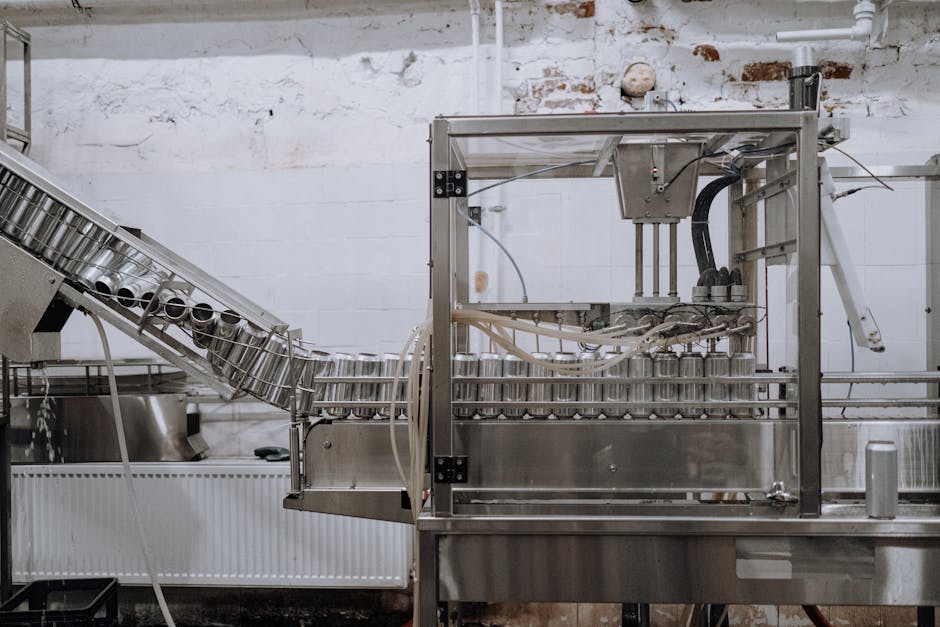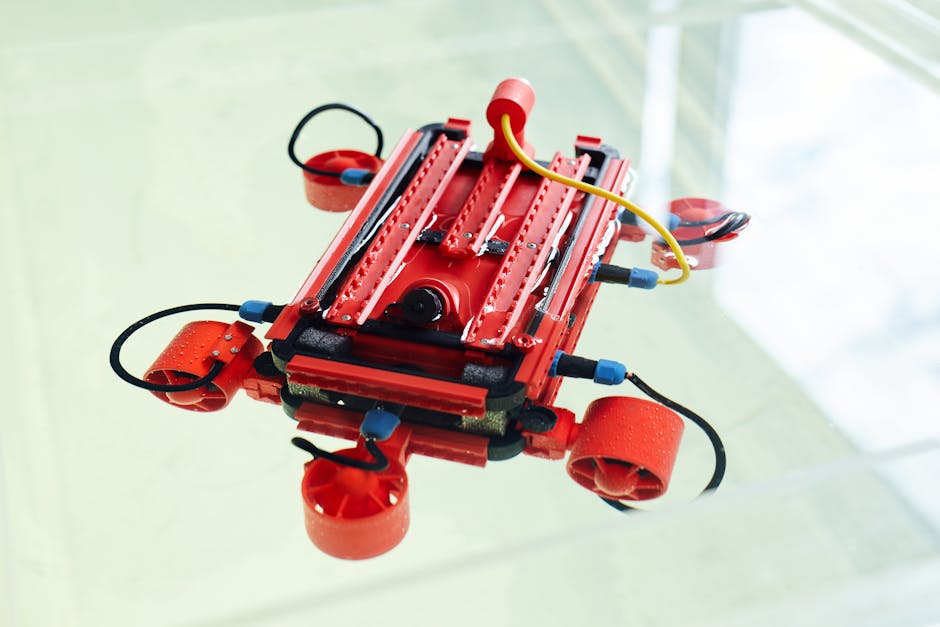Achieving Precision in Manufacturing With Advanced Cost Estimating Software
In the realm of modern manufacturing, achieving precision is paramount for meeting quality standards and maintaining competitiveness. Advanced cost estimating software has emerged as a critical tool in this pursuit, offering manufacturers the ability to exert control over their production costs with unprecedented accuracy.
By harnessing the power of innovative algorithms and data analytics, such software enables meticulous estimation of expenses across the entire manufacturing process. This introduction delves into the evolution, key features, impact, integration, and future trends of advanced cost estimating software, providing a comprehensive overview for those seeking to enhance precision and efficiency in their manufacturing operations.
Key Takeaways
- Advanced cost estimating software revolutionises the approach to cost estimation in manufacturing.
- The integration of capabilities such as data analytics, real-time updates, and scenario analysis enhances precision in cost estimation and informed decision-making.
- By streamlining processes, optimising resources, and reducing manual intervention, cost estimating software maximises efficiency and cost savings.
- The future of cost estimating software in manufacturing includes AI-driven systems, accurate cost prediction and management, and improved operational efficiency.
The Evolution of Cost Estimating Software

Over the past two decades, cost estimating software has undergone a significant evolution, revolutionising the way manufacturing precision is achieved. The historical significance of this evolution is profound, as it has transformed the approach to cost estimation in manufacturing processes.
Initially, cost estimating was a manual and time-consuming task, prone to errors and inconsistencies. However, with the evolution of cost estimating software, manufacturers have gained the ability to accurately and efficiently estimate the costs involved in producing precision-engineered components and products.
The evolution of cost estimating software has not only streamlined the estimation process but has also enhanced the overall accuracy and reliability of cost projections. Manufacturers can now rely on advanced algorithms, historical data analysis, and real-time market insights to make informed decisions about production costs.
This evolution has had a profound impact on the manufacturing industry, empowering businesses to optimise their processes and resources for improved precision and cost-effectiveness.
Transitioning into the subsequent section about ‘key features and capabilities’, it is essential to understand how these advancements have equipped cost estimating software with a multitude of powerful tools and functionalities.
Key Features and Capabilities

The evolution of cost estimating software has equipped manufacturers with a wide array of powerful tools and functionalities, enabling precise estimation of production costs. Key features and capabilities essential for achieving precision in manufacturing include:
-
Data Analytics: Advanced cost estimating software leverages data analytics to provide in-depth insights into the cost drivers of manufacturing processes. By analysing historical cost data, material prices, labour expenses, and equipment costs, manufacturers can make informed decisions to optimise their production processes and accurately estimate future costs.
-
Real-Time Updates: Modern cost estimating software offers real-time updates, ensuring that manufacturers have access to the most current cost information. This capability allows for immediate adjustments to cost estimates based on fluctuations in market prices, labour rates, or other variables, enabling proactive decision-making and cost control.
-
Scenario Analysis: The software enables scenario analysis, allowing manufacturers to evaluate various production scenarios and their associated costs. This feature empowers manufacturers to assess the financial implications of different production strategies, aiding in the selection of the most cost-effective approach.
These key features and capabilities not only enhance precision in cost estimation but also provide manufacturers with the control and insights necessary for informed decision-making.
Impact on Precision and Accuracy

Utilising advanced cost estimating software significantly enhances precision and accuracy in manufacturing cost estimation. This is achieved by leveraging data analytics, real-time updates, and scenario analysis capabilities.
Data analysis plays a crucial role in ensuring accurate cost estimation. It allows manufacturers to analyse historical cost data, industry benchmarks, and real-time market prices. This enables a more informed and data-driven approach to cost estimation, reducing the margin for error.
In addition, advanced cost estimating software enables process optimisation. It identifies inefficiencies in the manufacturing process that may impact cost estimation. By analysing various production scenarios and their associated costs, manufacturers can make informed decisions to optimise processes. This ultimately improves the accuracy of cost estimation.
Furthermore, real-time updates ensure that cost estimates reflect the most current data. This mitigates the risk of basing decisions on outdated information.
The integration of these capabilities enhances precision and accuracy in manufacturing cost estimation. It provides manufacturers with the control and confidence needed to make informed decisions.
Integration With Manufacturing Processes

Advanced cost estimating software seamlessly integrates with manufacturing processes, ensuring a streamlined and efficient approach to cost estimation and optimisation. This integration brings about several key advantages:
-
Process optimisation and data integration: The software seamlessly integrates with existing manufacturing processes, allowing for the optimisation of each step in the production cycle. By capturing and analysing real-time data from the manufacturing floor, the software provides valuable insights to optimise processes, minimise waste, and maximise efficiency.
-
Workflow automation: The software automates various aspects of cost estimation and manufacturing processes, reducing manual intervention and the potential for human error. This automation streamlines the workflow, allowing for faster and more accurate cost estimations while freeing up valuable resources for other critical tasks.
-
Real-time monitoring: Through real-time monitoring capabilities, the software provides a live view of the manufacturing processes, allowing for proactive decision-making and immediate adjustments to optimise costs and resource utilisation.
Cost Savings and Efficiency Gains

Cost savings and efficiency gains are critical objectives for any manufacturing operation, driving the need for advanced cost estimating software to optimise production costs. Process optimisation plays a pivotal role in achieving these objectives.
By leveraging advanced cost estimating software, manufacturers can analyse and streamline their production processes, identifying areas for improvement and cost reduction. This allows for the identification of inefficiencies and the implementation of targeted solutions, ultimately leading to significant cost savings and improved operational efficiency.
Furthermore, resource utilisation is a key focus for achieving cost savings and efficiency gains. Advanced cost estimating software enables manufacturers to accurately assess their resource requirements and optimise their utilisation, ensuring that resources are allocated effectively to minimise waste and maximise output.
By leveraging data-driven insights, manufacturers can make informed decisions that drive cost savings and efficiency gains across their operations. These capabilities ultimately contribute to a more competitive and sustainable manufacturing operation.
As technology continues to advance, future trends and innovations in cost estimating software are poised to further enhance these benefits, revolutionising the manufacturing landscape.
Future Trends and Innovations

The future of manufacturing is being shaped by several key trends and innovations. These include:
-
The integration of AI-driven cost estimation systems: This technology allows manufacturers to accurately predict and manage costs, leading to more efficient production processes and improved profitability.
-
Advancements in 3D printing technology: 3D printing is transforming the manufacturing landscape by enabling the production of complex and customised parts with greater speed and precision. This technology has the potential to disrupt traditional supply chains and reduce waste.
-
The impact of IoT integration on the manufacturing process: IoT devices and sensors are being used to collect real-time data throughout the manufacturing process, allowing for more efficient monitoring and control. This data can be analysed to identify areas for improvement and optimise production processes.
Each of these developments holds the potential to revolutionise the industry and drive precision and efficiency to new heights.
Ai-Driven Cost Estimation
Incorporating AI-driven cost estimation technologies is revolutionising the manufacturing industry by enhancing precision and efficiency in predicting production expenses. This innovation is driven by AI algorithms that analyse vast amounts of historical cost data, supplier pricing trends, and production variables to provide more accurate cost estimates.
The future of AI-driven cost estimation in manufacturing is poised to bring about significant advancements, including:
-
Real-time Cost Predictions: AI algorithms can process real-time production data to provide up-to-the-minute cost estimates, allowing manufacturers to make timely decisions and adjustments.
-
Enhanced Cost Optimisation: AI-driven cost estimation tools can identify cost-saving opportunities by analysing complex relationships between various production factors.
-
Predictive Maintenance Cost Analysis: AI can predict maintenance costs by analysing equipment performance data, enabling proactive maintenance planning and budgeting.
These advancements promise to further improve cost estimation accuracy and operational efficiency in manufacturing.
3D Printing Advancements
Advanced 3D printing technologies are poised to revolutionise manufacturing processes with their potential to enhance precision, efficiency, and innovation. Additive manufacturing benefits encompass a wide range of applications, from rapid prototyping to the production of complex, customised components. Below is a table highlighting some of the diverse 3D printing applications and their impact on manufacturing:
| 3D Printing Applications | Benefits |
|---|---|
| Rapid Prototyping | Accelerated product development |
| Customised Manufacturing | Enhanced product personalisation |
| Tooling and Fixtures | Cost-effective production of specialised tools |
| Complex Geometries | Ability to create intricate designs with ease |
As 3D printing continues to evolve, these advancements will play a pivotal role in shaping the future of manufacturing, driving unparallelled precision and efficiency.
Transition: Moving forward, the integration of IoT technology will further amplify these manufacturing advancements.
Iot Integration Impact
An essential aspect of achieving precision in manufacturing is the integration of IoT technologies. The impact of IoT integration is poised to revolutionise manufacturing processes through the implementation of machine learning applications and real-time data analysis. The future trends and innovations in IoT integration are set to bring about significant advancements in the manufacturing industry.
3 Future Trends and Innovations in IoT Integration Impact:
-
Enhanced Connectivity: IoT integration will lead to seamless connectivity between machines, enabling real-time monitoring and control over the manufacturing processes.
-
Predictive Maintenance: Machine learning applications integrated with IoT will enable predictive maintenance, reducing downtime and optimising equipment performance.
-
Data-Driven Decision Making: IoT integration will facilitate the collection and analysis of vast amounts of data, empowering manufacturers to make data-driven decisions for improved efficiency and productivity.
Frequently Asked Questions
Can Advanced Cost Estimating Software Handle Complex Manufacturing Processes and Materials?
Advanced cost estimating software is adept at handling complex manufacturing processes and materials. It enables precise material optimisation by incorporating detailed parameters and algorithms, resulting in accurate cost estimations for intricate manufacturing requirements.
How Does Advanced Cost Estimating Software Account for Fluctuations in Material and Labour Costs?
Fluctuation management in advanced cost estimating software involves real-time tracking of material and labour costs, allowing for cost variance analysis. This helps manufacturers adapt to market changes and make informed decisions, ensuring accurate cost estimations.
What Types of Manufacturing Processes Can Be Integrated With Advanced Cost Estimating Software?
Integration of advanced cost estimating software with various manufacturing processes enhances efficiency and optimisation. This includes integration with CNC machining, 3D printing, injection moulding, and more, ensuring accurate cost estimation across diverse manufacturing operations.
How Does Advanced Cost Estimating Software Impact the Overall Quality Control and Assurance Processes in Manufacturing?
Advanced cost estimating software greatly impacts the overall quality control and assurance processes in manufacturing by enhancing cost estimation accuracy, streamlining workflows, enabling real-time data analysis, and facilitating proactive decision-making to ensure high production standards.
Can Advanced Cost Estimating Software Provide Real-Time Data and Insights for Decision-Making in Manufacturing?
Real-time analytics from advanced cost estimating software offer invaluable decision support in manufacturing. With real-time data and insights, cost analysis and production optimisation become fluid processes, enhancing precision and efficiency in decision-making.
Conclusion
In conclusion, the advancement of cost estimating software has revolutionised manufacturing precision. Through its key features and capabilities, it has significantly impacted accuracy and efficiency.
The integration of this software with manufacturing processes has resulted in substantial cost savings and efficiency gains. As technology continues to evolve, future trends and innovations in cost estimating software will further enhance precision and accuracy in manufacturing, paving the way for a more efficient and cost-effective industry.
Contact us to discuss our services now!
